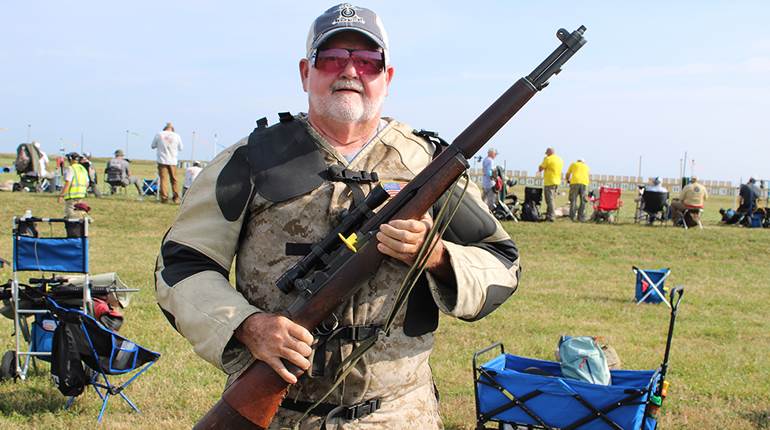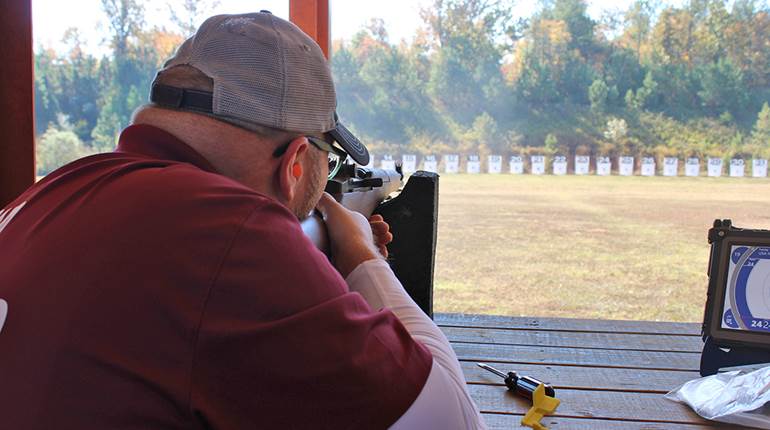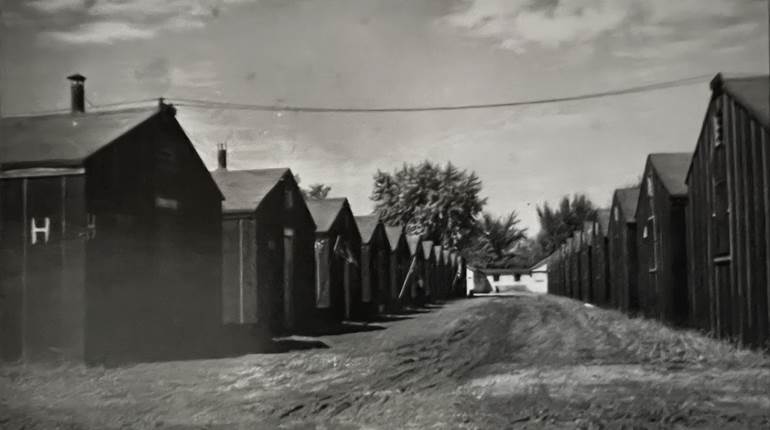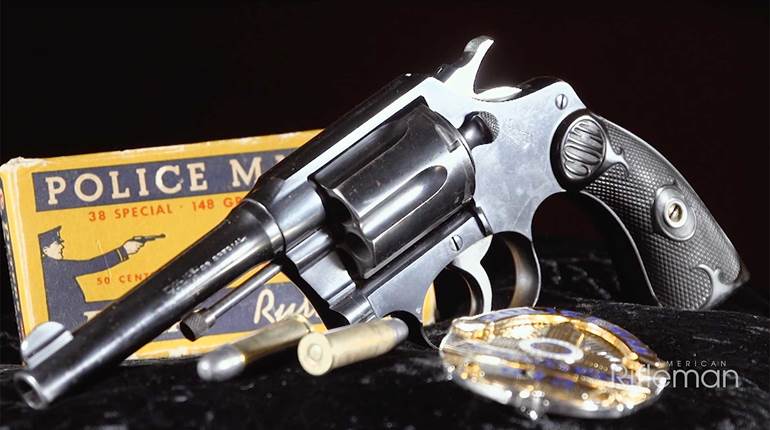
The first American soldiers to use M1 Garand rifles against the Nazis in World War II were 50 men of the U.S. 1st Ranger Battalion during the ill-fated Dieppe raid in France on Aug. 19, 1942.
Even though the United States military was first to adopt and standardize a semi-automatic battle rifle during 1936, the “U.S. Rifle, Caliber .30, M1” would not fire a shot in anger until its use in the defense of the Philippines, beginning in December 1941.
When the M1 Garand rifles fell silent on Bataan in April 1942, John Garand’s legendary creation would wait four months before engaging the Axis again. This time it would be in the European Theater of Operations—in the hands of U.S. Army Rangers.

The U.S. Army Rangers Are Born
Under the direction of Maj. Gen. Lucian Truscott, the U.S. Army had endeavored to create its own version of the famed British Commandos. More and more American troops were arriving in the United Kingdom through the first half of 1942, and, by late June, the 1st Ranger Battalion had been organized, with the greatest amount of the men recruited from the 34th Infantry Division. Training began at Carrickfergus in Northern Ireland with support from combat-hardened British Commandos.
The Rangers were equipped with much of the latest American combat gear, save for their M1917A1 “Kelly Helmets,” which gave them the appearance of British troops, at least from a distance. Up close, their arms were instantly recognized as something distinctly different. Standard-issue rifles were M1s, and Browning Automatic Rifles were used as the squad automatics. American officers carried the M1911 pistol.
Their British allies were quick to notice the big semi-automatic rifle, and the Commandos were almost instantly jealous of the firepower that the M1 offered. In his book, Rangers At Dieppe, author Jim DeFelice noted that: “Besides being impressed with the Americans’ marksmanship, British Commando Major Mills-Roberts liked their gun, which was superior in many ways to the Enfield rifles the Commandos were using. In fact, the M1 was so popular with the Brits that over in 3 Commando, (American Ranger) Capt. Murray gave one to Col. Durnford-Slater as a present—and then found it polite to scrounge up more for other Commando officers.”
The Commandos weren’t the only British that were impressed with the American rifle. During training at Carrickfergus, the Rangers were visited by the British royal family. The queen herself asked a Ranger several intelligent questions about his M1, before examining it “like an expert” while expressing her admiration for the rifle. The M1 rifle had not fired a shot against the Germans yet, and it was already drawing rave reviews and making friends in high places.

The Dieppe Raid
Beginning in February 1941, British Commandos struck at the German and Italian occupiers from Norway to North Africa. Some were highly ambitious, such as Operation Flipper in November 1941, the unsuccessful attempt to kill German General Rommel in North Africa. Other raids, such as Operation Archery, conducted in Norway during late December 1941, caused significant damage and forced the Germans to deploy an extra 30,000 men to defend their Norwegian bases. Commando raids rattled the Nazis and reminded them that retribution was coming one day.
During March 1942, No. 2 Commando staged an audacious raid, Operation Chariot, against the heavily defended port of St. Nazaire in France. The attack was a success, and the strategically important Normandie lock, capable of housing the German battleship Tirpitz, was destroyed. The cost was great though; of the 241 Commandos sent on the mission, 173 were either killed or captured.

The rationale for the massive raid on the French port of Dieppe in August 1942 is difficult to describe. The British had committed to opening a second front to take pressure off the Soviet Union in the East. More specifically, a commitment had been made to open a new front in Western Europe. In hindsight, it can seem that the Dieppe operation risked far too much to achieve far too little. But remember, too, that at that moment in history, the Allies desperately wanted and needed to strike back at the Germans in occupied Western Europe as fiercely as possible.
The Dieppe Raid was originally planned for April 1942 and was code-named Operation Rutter. It was to be a large raid, including a significant paratroop drop on a German-held Channel port, culminating in a short-term occupation and a total destruction of the port facilities and German defenses. Cooler heads prevailed, and Operation Rutter was considered unsupportable and was consequently dropped. But the idea was not forgotten.
By August, Rutter had come back to life, transformed into Operation Jubilee. The objectives were similar and similarly hazy. A major French port on the Channel coast was to be seized and held for a short time, prisoners were to be taken, intelligence gathered and the German defenses destroyed before an orderly withdrawal.
To that end, more than 6,000 infantrymen, most of them Canadians, were tasked with conducting this short-term invasion. The Calgary Regiment of the 1st Canadian Tank Brigade, equipped with Churchill heavy tanks, would provide support on the ground. Joining them would be 50 American Rangers, freshly trained and ready to see their first action. Those Rangers would carry M1 rifles onto the beach in France.
The initial landings would begin a few minutes before 5 a.m. on the morning of Aug. 19, 1942. Significant problems began almost immediately. Coordination was minimal, confusion abounded and the consequent losses were high. In less than 10 hours, the massive raid was over. All Allied troops had either been evacuated or killed, with 1,946 left behind to be taken prisoner by the Germans.

Of the almost 6,100 men who went ashore at Dieppe, 3,623 were killed, wounded or captured. No one within the Allied command was prepared for more than 60 percent of the landing force to be lost. The Royal Navy suffered too, with 33 landing craft lost along with the destroyer H.M.S. Berkeley. Overhead, the Royal Air Force lost 106 aircraft. It was a bitter, miserable day.
Author Ian Fleming, the man behind James Bond, worked for British Naval Intelligence during World War II. In early 1942, Fleming created 30 Assault Unit, a unique combat team comprised of intelligence specialists. The unit’s members secretly participated in the Dieppe Raid in an effort to obtain a German Enigma encoding machine and its related codebooks. This was yet another objective of the raid that didn’t work out.

First Blood at Bloody Dieppe
The 1st Ranger Battalion had existed for just two months before the Dieppe Raid. While the Rangers’ combat contributions were small, their casualties were proportionally just as high as the rest of the raiders. Fifty Rangers traveled to France, interspersed among the British Commandos and the Canadian infantry. Three Americans were killed, three were taken prisoner and five were wounded. Considering that a number of Rangers couldn’t even reach the beach due to problems with their landing craft, their actual casualty rate was more than 70 percent. The Rangers had traded shots with the Germans, sharpshooting with their M1 rifles, and giving as good as they got.
Despite the heavy losses of the Dieppe Raid, the Allied press spun the operation into public relations gold. Rangers became celebrities in England, and Americans gained confidence that their troops could take the fight to the Germans. The poor planning and consequent losses on the beach at Dieppe provided a powerful wake-up call for Allied commanders. Their ability to open a second front in Western Europe was far away, but there had been much learned about the makings of a successful amphibious assault. The sacrifices made by the Canadians at Dieppe were ultimately not in vain.
Successful landings were soon to follow in North Africa (Operation Torch) during November 1942, Sicily (Operation Husky) during July 1943 and Italy (Operation Avalanche) in September 1943.
When American troops and the M1 rifle returned to France, they would do so in a big way and with great success. The lessons learned from Operation Jubilee had helped create Overlord. The second front was finally open, along with the long road to Berlin.





































